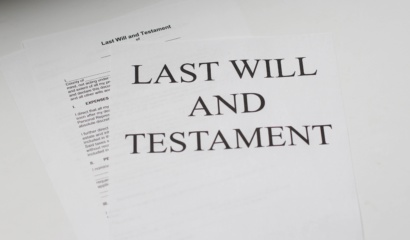Home / Business Legal Lifecycle / Start Up
Start Up
Business Startup Legal Advice
Phase 2 – Start-Up
The Start-Up phase commences the moment you take the plunge and start your business. This may include setting up the entity to operate your business, signing a lease for your premises or borrowing money to invest in your business. It is important to seek relevant business startup advice to ensure you are adequately prepared to develop you business. If you have not successfully completed the Conception phase of the Business Legal Lifecycle, the Start-Up phase will be the scariest phase as you are not in control of all aspects of your business. Problems and pitfalls will pursue you on a daily basis and prevent you from getting to the next phase (Initial Clients).
Generally, a business in the Start-Up phase will be opportunity-driven and action orientated as the business owner will react strongly to different ideas and pressures and try to be all things to all people at all times. You need to accept that, as a business owner, you will be constantly stressed during this phase. This is completely natural as you take your first steps into the business world without the ‘safety net’ of paid employment. If you follow the Business Legal Lifecycle, you can use the business startup advice from this and start up your business correctly which will save you a lot of money. After successfully navigating your way through the Conception phase, there are a number of matters you need to consider as the Start-Up phase has the most variables and options of all of the phases of the Business Legal Lifecycle.
Important considerations during the Start Up phase of your business are:
- Setting up the correct structure for your business
- Entering into a lease that is on commercial terms
- Creating your brand
- Funding your business until your first client is obtained and pays you for your services
- Defining your responsibilities
- Managing crises
- Dealing with management issues without having management experience
Dangerous ways of thinking during the Start Up phase of your business are:
- Rushing your new business, product or service to the market too quickly
- Trying to be all things to all people
- Not recognising and accepting errors or mistakes
- Pushing on despite insufficient funds to cover the initial cash flow for the new business, product or service
During this phase I will provide business startup advice and discuss concepts such as structuring the ownership of your business, entering into a lease for the premises from which the business will operate, the director’s responsibilities, considerations if you want to be a franchise, taking out loans, and insurance. While this seems like a lot to consider early on in the process, these steps are crucial in order to establish a business properly and to complete the Start-Up phase. I have left out a number of aspects that are ordinarily recommended by startup lawyers as I want to focus on only the most essential elements needed to get your business off the ground at this cost prohibitive stage. I can’t emphasise strongly enough how critical it is to obtain business startup advice from your key advisors (accountant, financial planner and lawyer) on these issues. Your goals and circumstances are unique to you, and there is no ‘one size fits all’ model. Anyone who tells you otherwise does not understand what is required to establish a successful business.
Start Up Business Structures
A structure is a separate legal entity to operate your business. It can be seen as the vehicle or entity that you are using to purchase or establish the new business, product or service. A structure may also refer to multiple vehicles or entities; for instance, a builder may set up one entity to run their construction company, another to own the assets of the business, another to own the real property assets that are being constructed, and one to operate a different business associated to the other vehicles or entities in the one structure.
Setting up the right structure for your business at the outset is crucial to its future. Often when clients first come to see me, they have been speaking to other people about setting up their business. Unsurprisingly, they have decided that they want to ‘set up shop’ exactly the same way as their friend set up their business. While the business startup advice may be accurate and sound – for the other business — it may not be right for you. It is crucially important that you obtain independent advice from your advisors about the best structure that needs to be set up based on your unique circumstances.
Key questions for deciding your start up business structure include:
- What is your current financial and personal situation?
- What structures, if any, do you have in place now?
- What liabilities do your current structures have and can this be used to your advantage in the new business?
- What assets do you own and in what structures?
- What are your long-term strategy and goals; that is, do you want to set up the business to earn an income and be a long-term lifestyle business, or do you want to build a business that you can sell once it is properly set up?
- What is your personal/family situation?
- Are there other unrelated investors from whom you need protection?
The biggest pushback that I see in this phase is when a business owner does a cost vs benefit analysis when setting up the correct structure. Whilst the initial start-up costs may seem high, they are essential to ensure that you:
- Protect any other assets that you own
- Consider your succession planning
- Effectively plan the best tax position for your business
From a legal perspective, each business, and where possible each different aspect of the business, should be a separate vehicle or entity under one overarching structure. This means that should one vehicle or entity fail, then your other vehicles or entities will be protected.
A lawyer will only advise you as to the appropriate structure you need for your start up business from a legal perspective. You also need to obtain accounting and financial advice before setting up the structure to ensure that you have carefully considered all aspects of your business before moving forward.
There are six different structures that may be suitable for a new business. Which one you choose depends on your situation, your goals, and the model you have chosen. They are:
- (a) sole trader
- (b) company
- (c) discretionary trust
- (d) unit trust
- (e) partnership
Don’t forget, when setting up a new business you must always evaluate the risks and consider future problems that may arise that are beyond your control. Setting up the right business structure during the Start-Up phase will save you a lot of money and grief down the track.
Sole trader as a start up business structure
The term ‘sole trader’ refers to a business being operated by a person in their own name, for example Bob Smith trading as Smith’s Auto Repair. Operating as a sole trader is the most common structure for small businesses in Australia. It often comes as a surprise to many business owners that by operating a business in their own name, they take primary responsibility for all debts and liabilities of the business. As the operator of the business, they are personally liable for any defective work, any injury caused through their business, and for all debts that the business incurs. From a legal perspective, starting a business as a sole trader carries the greatest risk.
You must always consider both the short-term and long-term problems associated with operating a business. Events and risks beyond your control may mean that you lose a lot of money in the future that could have been prevented if you set up the right structure in the first place.
From a legal standpoint, being a sole trader is an extremely risky way to operate a business. There are other structures that can better protect you and your assets, and minimise the tax payable for the profits from your business.
Company as a start up business structure
Operating a business through a company is also very common. A company is a separate legal entity from the people behind the business thus it ‘shifts’ the risk of liability in many circumstances away from the owners of the business to the company itself.
The two main roles in a company are directors and shareholders. Directors are responsible for the day-to-day operation of the business; they make decisions on procedural matters such as entering into contracts, paying wages, and a variety of other aspects of the business operated by the company. They are there to ensure that the business is operating profitably and they also hold responsibility for a number of other aspects of the business: see the overview in section 2.3.
As part of their role, directors may be held liable for debts incurred by the company. This generally only occurs if they sign a personal guarantee, or if they incur debts on behalf of the company when they know that the company is insolvent: more on this in section 13. Shareholders, on the other hand, own the business according to the number of shares that they have in the company. Shareholders are said to have the real control of the business as a majority of shareholders (shareholders who own over 50% of the shares in the company) can appoint and remove directors from the company.
You may have heard the phrase, ‘a $2 company’. This refers to the share capital of the company. The number of shares each shareholder buys, which can be paid up, or the money ‘owed’ to the company, generates the share capital. A shareholder’s liability is limited to the amount they still owe for their shares. This means that if you start a company and buy 10 x $1 shares in that company, you are liable to pay the company $10, if you have not already paid. The only other situation where a shareholder will be liable is if a lender or supplier requires a personal guarantee from the shareholders of the company. This limited liability protects the shareholders from the debts of the company and means that creditors cannot pursue the shareholders for the debts of the company.
Company constitution
Each company in Australia should have a constitution, which essentially states the rules and regulations by which the company will operate. It governs the company’s relationship with its shareholders and directors in a general sense and provides a framework for the management of the company. If a company does not have a constitution, then it will be governed by ‘replaceable rules’ and you need to consult with your startup lawyer to ensure that you understand your responsibilities under this Arrangement.
Shareholders’ agreement
A ‘shareholders’ agreement’ is another type of contract between the shareholders that sets out rules in relation to the company’s management. This agreement is generally more comprehensive than a constitution, and must be drafted with the terms of the constitution in mind to ensure that there is no conflict between the two documents. Where you have multiple shareholders it is important to consider the different roles that each shareholder performs, and to what extent they can make decisions and agreements that affect the other directors and shareholders. I will discuss the options of shareholders’ agreements, and buy/sell option agreements, in sections 6.3 and 8.4.
Discretionary trust as a start up business structure
A trust, like a company, is a very common vehicle or entity with which to operate a business as it separates liability from the business owner to the trust entity. Generally, a trustee holds properties and assets for the benefit of either a beneficiary or a group of beneficiaries. In a discretionary or family trust, the trustee holds the income and assets for the beneficiaries ‘on trust’, and uses their discretion to decide who receives income and capital from the trust. This is distinct from a fixed trust where the beneficiaries’ entitlement to the income and assets of the trust are fixed to a certain percentage. A trust is set up by way of a trust deed where the settlor provides the rules which the trustee will use to govern the operation of the trust for the benefit of the beneficiaries. If you are thinking of setting up a trust, you need to give careful consideration to all of the terms of the trust deed to ensure that the document meets the needs and requirements of you and your business. Trusts are complicated legal structures, so it is critical that you obtain competent and thorough legal and accounting advice before setting one up.
The benefits of a discretionary trust
There are a number of benefits that come with using a discretionary or family trust. These include:
- Distribution of profits and capital can be made to family members of the main person, usually the person behind the business, in the trust rather than just the person operating the business
- Children are entitled under the trust to the family’s money without the parents losing control over the assets because the trustee controls how much money they get
- Property can be retained within a family
- Protection is provided against creditors
- The trust is an effective structure to help minimise tax
The roles in a discretionary trust/family trust
There are generally four distinct roles within a discretionary or family trust. When establishing this type of structure, it is critical that you understand the different roles so that the correct person or entity is assigned to each role; this is to ensure that the trust complies with the legal requirements.
The roles are:
- (a) the trustee
- (b) the settlor
- (c) the beneficiaries
- (d) the appointor or principal
The trustee
The trustee is the legal owner of the trust property, which is different to the beneficial owner of the property. The trustee has day-to-day control over the trust and is under an obligation to ensure that they do not place themselves in a position of conflict between the interests of the trust and their personal interests.
It is important that a trust deed is properly drafted to ensure that the trustee has all of the powers that they will need under the trust without compromising the security of the business. A trustee is primarily liable for the debts and operations of the business and has the right to be indemnified from the trust assets. This means that if you set up a trust with Joe Bloggs, named as trustee for the Bloggs Business Trust, then Joe Bloggs is personally liable for all of the debts incurred by the trust, unless he can pay the debts out of the assets of the trust. If the trust has insufficient assets to meet its obligations, Joe is thus personally liable for the debts of the trust. For this reason, and to separate liability, I always recommend that a company should be established to act as the trustee. If a trust is established and will not be trading with the outside world, such protection is usually not required. Where a trust will be trading, incurring debts or essentially dealing with third parties, it is important that a company is established as the trustee.
The settlor
To establish the trust, a sum of money must be paid by a settlor. As the settlor cannot derive any benefit from the trust, they cannot be a beneficiary. The only obligation the settlor has under the trust is to pay a sum of money to create the trust, and to execute the trust deed or declare the trust in writing. I have heard of legal and accounting firms who did not pay the settlement sum when establishing these types of trust despite being the settlor of the trust. This is a dangerous path to take because, if the trust is ever investigated, it may be found to be a ‘sham’ because it was not established properly. This could cause great financial losses as the business owner will be forced to pay tax on the money personally (as no trust was established properly) and will have to set up a brand new structure all over again.
The beneficiaries
The beneficiaries are the people, vehicles or entities who can expect to receive a benefit from the income earned by the trust, and who are entitled to the capital generated by the trust. However, beneficiaries do not have a direct interest in the assets of the trust itself. The decision lies with the trustee in their discretion to decide which beneficiary receives what income or capital from the trust. In a family trust, the beneficiaries are ordinarily all members of a family, as well as any or trust with which a beneficiary is involved. This gives the trustee broad discretionary powers to distribute trust property to a variety of entities which assists in effective tax planning.
The appointor or principal
The appointor (or principal as they are sometimes referred to in a trust deed) is the person with the real control of the trust. The appointor has the power to remove and appoint a new trustee at their discretion. The appointer will generally also have the power to add new beneficiaries to the trust; however, this power should be used with great caution as it can have consequences for taxation. If you want to add or remove a beneficiary of a trust after it is established, then you will need to obtain advice from your accountant and lawyer for your startup business in relation to the consequences that the change will have on your specific situation.
Unit trust as a start up business structure
Similar to a company and a discretionary or family trust, a unit trust is a separate legal entity that can operate a business or own an asset. A unit trust is distinct from a discretionary or family trust in that the beneficial interest in the assets of the trust are owned by the beneficiaries in proportion to the number of units that they hold in the trust. Generally, this structure is used where there are a number of unrelated business owners who want to own a share in the business through the trust.
In Australia, it is important to note that there are special rules that apply to a unit trust where the number of members is 20 or more. There will be similar rules when setting up a unit trust in other countries. Should you intend to put together a structure where this will occur, you will need to obtain specialist accounting and legal advice in relation to these matters.
The roles in a unit trust
Similar to a discretionary or family trust, there are a number of different roles within a unit trust. It is critical that any person considering setting up this type of vehicle or entity understands the different roles so that the business owners can make an informed decision about the right person for each role. There are generally two distinct roles within a unit trust. These are:
- (a) the trustee
- (b) the unit holders
The trustee
As with the trustee in a discretionary or family trust, the trustee in a unit trust is the legal owner of the trust property (distinct from the beneficial owner of the property). The trustee has the management of the trust and also must ensure that they are not in a position of conflict between the interests of the trust and their own personal interest. The trust deed also operates in the same way as the trust deed in a discretionary or family trust. It will set out a number of powers that the trustee is entitled to exercise, usually all of the powers that an individual can exercise. It is essential that your trust deed is drafted properly to ensure that the trustee has the proper powers under the trust.
Again, the trustee is primarily liable for the debts and operations of the business but has a right to be indemnified out of the assets of the trust. As a unit trust will almost certainly be a trading trust, the trustee should be a company to shift liability to the company rather than to the people behind the vehicle or entity.
The unit holders
Unlike a discretionary or family trust, there is generally no settlor in a unit trust. Instead, the initial contribution to the trust comes from the unit holders. The contribution will be the price paid by the initial unit holders for their units in the trust. The unit holders are the people and entities that have an entitlement to the income of the trust and are entitled to the capital of the trust. The unit holders do not have a direct interest in the assets of the trust other than those benefits provided to them upon the trustee exercising his or her powers under the trust deed. When the trustee distributes income to the unit holders, this is always in proportion to the units held by the unit holder in the trust.
There is a general principle that unit holders are liable for the debts of the trust; however, this can be avoided with a properly drafted unit trust deed whereby their potential liability is avoided and the unit holders, like shareholders in a company, will also have protection from the debts of the business. This is critical protection that you must consider before setting up a unit trust.
Generally, it is the unit holders that have the power to appoint and remove trustees of the trust as there is no appointor. This is distinct from a discretionary or family trust where the power to appoint and remove trustees vests in the role of the appointor.
Un-incorporated partnership as a start up business structure
An un-incorporated partnership is a structure whereby a number of vehicles or entities partner together to operate a new business, sell a product or service or own an asset. A company and a unit trust are both forms of incorporated partnerships as they are structures that are established to deal with the different vehicles or entities by their owners.
An un-incorporated partnership is used much less frequently these days due to the fact that the individual partners, as in a sole trader structure, remain primarily liable for the debts of the business. There is no separation between the business owner/s and the outside world contracting with the business.
To help shift liability to the entity, you can set up a partnership of trusts, companies or individuals. A partnership of trusts is a popular structure for accountants where their clients are investing in real property, as it has many advantages from a land tax perspective in Australia.
The partnership agreement
Where entering into a partnership, it is critical that you have a properly constituted and drafted partnership agreement. Like the constitution of a company, a partnership agreement sets out the rules governing the relationship between the partners, including defining responsibilities for the day-to-day operation of the business. It is also critically important to plan for the end of the partnership to give partners an appropriate ‘exit strategy’.
A combination of vehicles or entities as a start up business structure
As I have previously discussed, it is quite normal for a structure to be established using multiple vehicles or entities. For example, the shareholders in a company or the unit holders in a unit trust will often be a discretionary or family trust to allow for the benefits of income distribution amongst the business owner’s family, without risking the discretionary or family trust being the entity that trades the business. It is also common for an un-incorporated partnership to use a partnership of companies or trusts to provide similar protection to the parties to that of a company or unit trust structure.
Trading/business name
It is important that you register any trading or business name as required by your local laws. This will ensure that nobody else can use that name in competition with you. Also, some laws provide that you cannot trade a business without having it registered with the appropriate government body.
Summary of Business Startup Legal Advice
It is common to have a variety of different entities or vehicles within your structure, allowing for the most tax-effective distribution of your income and capital of the business. There is no ‘one size fits all’ structure for a business. When setting up a structure, it is essential that you seek complete business startup advice from qualified professionals that caters to your unique situation. Therefore, stay away from ‘barbecue advice’ when it comes to making important and complex decisions about running your business.
As we have seen, the considerations that go into the Start-up phase are extensive and require a great deal of advice from a range of different consultants. If all of the matters covered in this section are not considered at this stage, you may find that once you do eventually get around to considering them, you will have incurred additional significant costs because of the delay. A very common example is where a business begins as a sole trader, and later it is transitioned into a company, whereby it incurs tax and duty costs for the transfer along with the legal and accountancy costs in doing so.
Similarly, without early business startup advice as to the terms of the lease, you may be two or three years into a five or 10-year lease, and realise that you have agreed to an uncommercial term that will cost you a significant amount of money down the track. As the lease is a binding contract between the business owner and the landlord, it cannot be changed and, if you want to stay in the premises long term, you may have significant issues trying to renegotiate the terms of the lease, even with legal advice. Evaluating the different aspects of this phase slowly and carefully will ensure that you successfully set up your business on sound financial footing. I have seen many business owners rush their way through this phase and not consider the implications of their actions, incurring them thousands of dollars in unnecessary costs. Once you have successfully navigated your way through Phase 2 – Start-Up, you are ready to proceed into Phase 3 – Initial Clients.
More Information On Start-Up
Questions to ask before you progress to the next phase of starting your business:
Have you set up the correct structure for your business?
If you are entering into a lease, is it on commercial terms that you are happy with?
Have you created your brand?
Do you have a clear path for funding your business so that you can operate successfully?
Do you understand your responsibilities as a business owner?
Do you have management experience? If not, where can you turn to get the right advice?
Interested In Discovering Your Legal Risks?
FAQs
Have an Enquiry?






